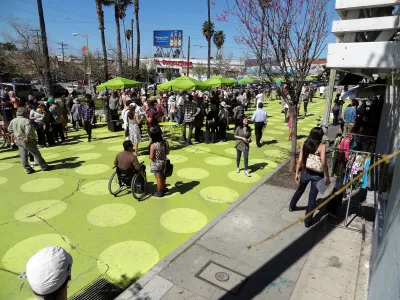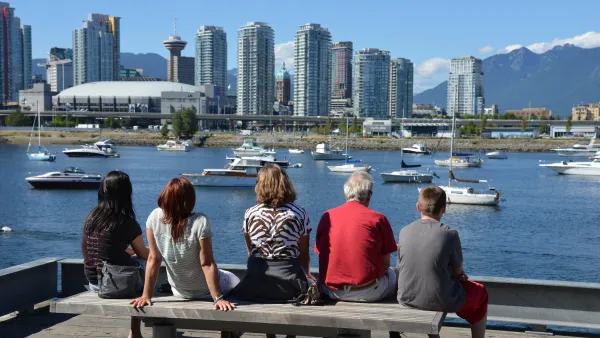'Placemaking,' the process by which cities and developers supposedly create appealing public spaces, is in a crisis, writes critic James Russell. Too many "made" places are generic and lack true relevance to the cities that build them.

The nonprofit Project for Public Spaces has, for years, championed the creation of plazas, parks, public markets, and other outdoor spaces that invite activity and make cities more appealing. They have been involved with as many as 3,000 projects to date. While "placemaking" may pursue lauadable goals, archtiecture critic James Russell cautions that some placemaking efforts are as generic as the dead cityscapes that they aim to improve.
Russell is particularly concerned about sense of place—the unique attributes of a city—rather than formulaic notions about amenties. He writes on his blog, "After you hack through thickets of slogans and vagaries, Placemaking seems to comprise a community-driven process for designing public spaces (streets, sidewalks, plazas, squares, campuses, parks, and so on) that are mixed use, host a variety of activities for diverse audiences, and are well-connected to the larger city or town."
Russell blames PPS—but not entirely:
"Placemaking could only gain currency because our building and development processes create so little that is inviting and memorable. America’s default is to assemble standardized real-estate products along roads engineered for auto throughput, and call it a day. Placelessness is so ubiquitous and such second nature that it is actually hard to think about what it takes to make a building or streetscape that’s appealing, that feels as if it belongs."
Russell offers a few examples of what he considers successful, unique places—including Seattle's Glassworks, La Jolla's Salk Center, and New York's Broadway Apple Store—and a few that represent what he considers tired New Urbanist retreads.
FULL STORY: Enough of Bogus “Placemaking”

Analysis: Cybertruck Fatality Rate Far Exceeds That of Ford Pinto
The Tesla Cybertruck was recalled seven times last year.

National Parks Layoffs Will Cause Communities to Lose Billions
Thousands of essential park workers were laid off this week, just before the busy spring break season.

Retro-silient?: America’s First “Eco-burb,” The Woodlands Turns 50
A master-planned community north of Houston offers lessons on green infrastructure and resilient design, but falls short of its founder’s lofty affordability and walkability goals.

Test News Post 1
This is a summary

Analysis: Cybertruck Fatality Rate Far Exceeds That of Ford Pinto
The Tesla Cybertruck was recalled seven times last year.

Test News Headline 46
Test for the image on the front page.
Urban Design for Planners 1: Software Tools
This six-course series explores essential urban design concepts using open source software and equips planners with the tools they need to participate fully in the urban design process.
Planning for Universal Design
Learn the tools for implementing Universal Design in planning regulations.
EMC Planning Group, Inc.
Planetizen
Planetizen
Mpact (formerly Rail~Volution)
Great Falls Development Authority, Inc.
HUDs Office of Policy Development and Research
NYU Wagner Graduate School of Public Service



























